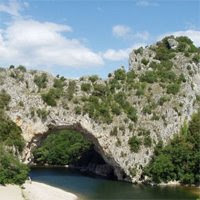 The Deepwater Horizon oil rig owned by Transocean has drilled the deepest oil well in history (35,050 feet) in September 2009 in the Gulf of Mexico. In January, the rig started operation at a British Petroleum project, approximately 41 miles offshore Louisiana on Mississippi Canyon block 252. On April 20 a fatal explosion occurred on the rig. Of the 126-member crew, 115 were safely evacuated. Despite exhaustive rescue efforts, eleven crew members lost their lives, nine of which were Transocean employees. After an unsuccessful effort to douse the fire, the remains of the rig sank to the ocean floor 5,000 feet below.
The Deepwater Horizon oil rig owned by Transocean has drilled the deepest oil well in history (35,050 feet) in September 2009 in the Gulf of Mexico. In January, the rig started operation at a British Petroleum project, approximately 41 miles offshore Louisiana on Mississippi Canyon block 252. On April 20 a fatal explosion occurred on the rig. Of the 126-member crew, 115 were safely evacuated. Despite exhaustive rescue efforts, eleven crew members lost their lives, nine of which were Transocean employees. After an unsuccessful effort to douse the fire, the remains of the rig sank to the ocean floor 5,000 feet below.
The cause of the incident is not known at present. It is assumed that a minor blow-out has occured. Oil and gas, was flowing from the formation into the wellbore and was rising undetected up to the rig floor where the gas was ignited. After the explosion it was not possible anymore to shut the well by activating the underwater blowout-preventer (BOP). It was reported that the rig had apparently just finished cementing steel casing before the well was to be suspended. The plan was to re-enter the well later with another rig to complete the work and bring the well into production.
The Transocean Deepwater Horizon is a floating rig that moves with the waves. The pressure control equipment sits on the seabed and is controlled remotely from the platform. Although there are enormous safety measures in place to prevent drilling incidents the risks are always present in the industry. Transocean is one of the industry's most safety-conscious and experienced deep-water company that has recently moved head quarters to Zug, Switzerland.
A catastrophic amount of oil is spreading over the ocean and threatens land, wildlife and the seafood industry. An oil spill quite this bad had not been seen since the Exxon Valdez incident some twenty years ago.






